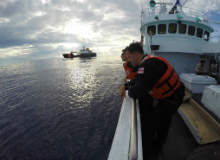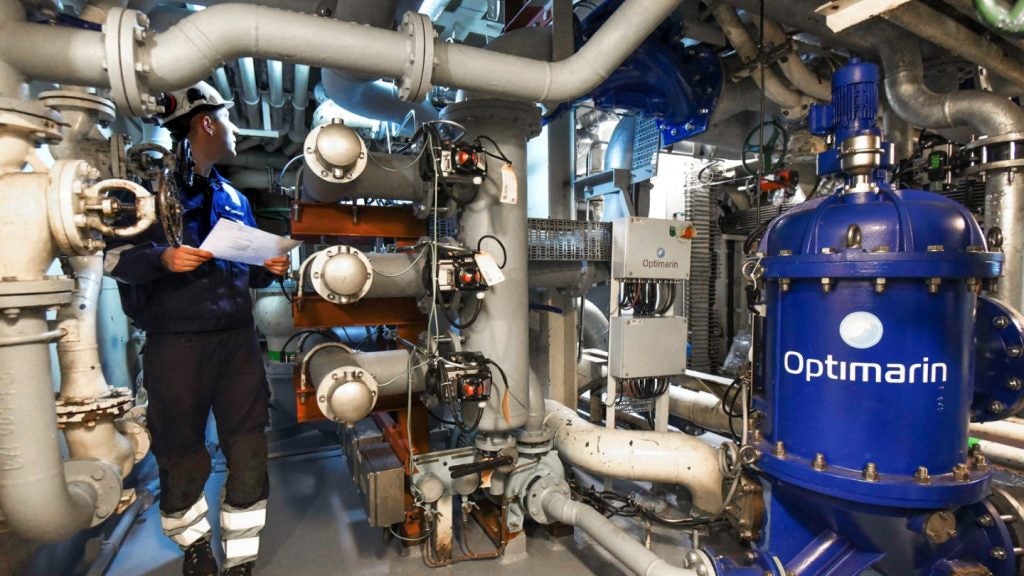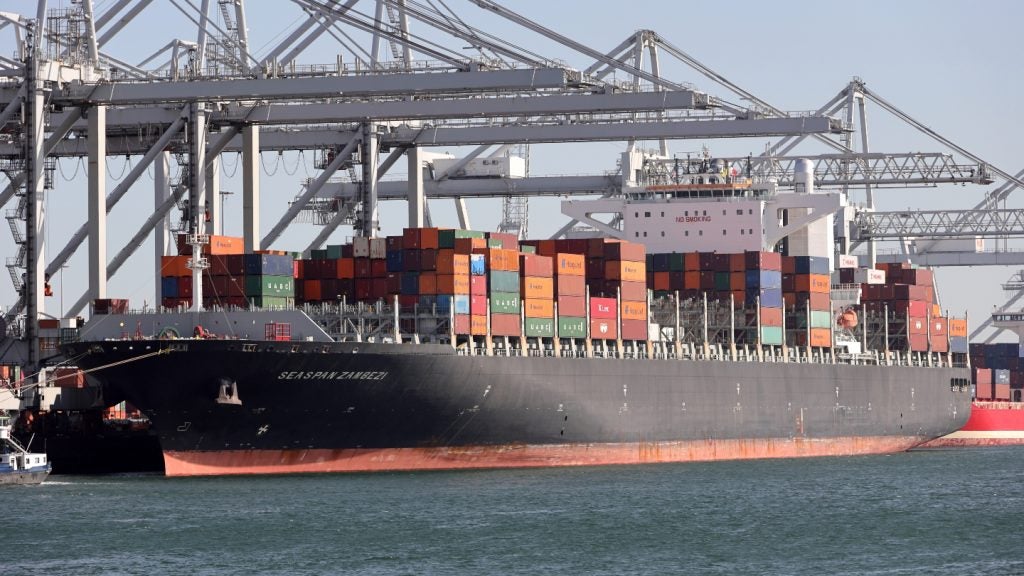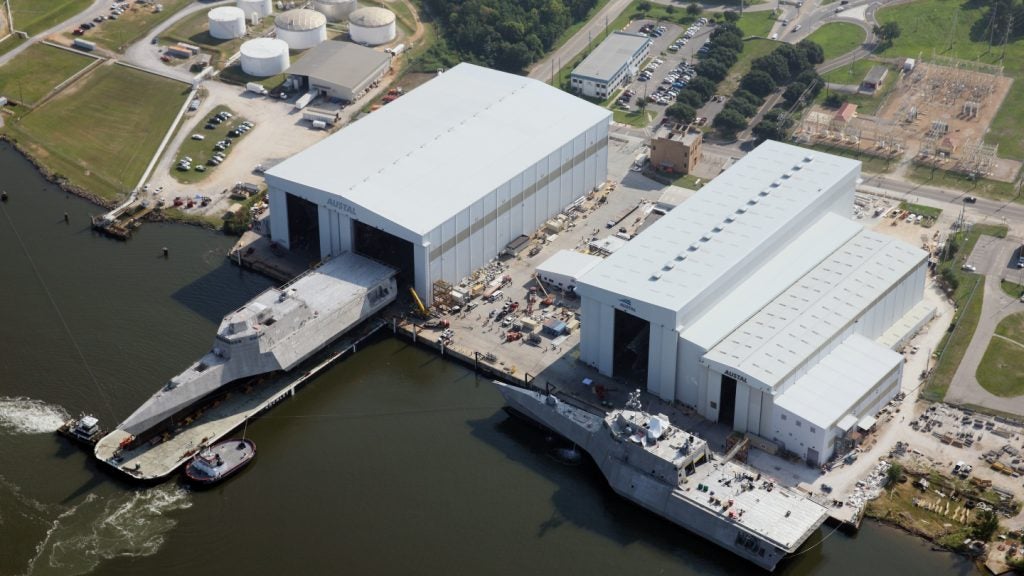
When the US Coast Guard (USCG) rejected most probable number (MPN) technology for determining the efficacy of ballast water treatment systems (BWMS) last December, it set a precedent as the first International Maritime Organization (IMO) state to do so.
The rationale for the USCG’s dismissal of MPN, which measures organisms’ ability to reproduce – as opposed to whether they are alive or dead – was based on the wording in the regulation “live/dead”. The technology, it claims, does not evaluate the performance of BWMs onboard vessels to a suitable discharge standard.
Instead, it has chosen to stick with its preferred method of vital staining, whereby a combination of two fluorescein-based stains is used to evaluate the status of organisms in ballast water samples. The stains penetrate and fluoresce the organisms’ cellular membranes, which the USCG says allows for the determination of whether an organism is living or not.
The argument, however, has not washed, and has been met with almost unanimous criticism from the scientific community and BWMS manufacturers alike, who believe the technique to be economically and environmentally unfeasible.
Tough stance
One of the first groups to condemn the decree, on 14 December, was international certification body DNV GL, which has previously undertaken work on behalf of the USCG.
DNV GL is firmly in favour of the MPN method as the most reliable way of evaluating the performance of ultraviolet (UV) technologies.
How well do you really know your competitors?
Access the most comprehensive Company Profiles on the market, powered by GlobalData. Save hours of research. Gain competitive edge.

Thank you!
Your download email will arrive shortly
Not ready to buy yet? Download a free sample
We are confident about the unique quality of our Company Profiles. However, we want you to make the most beneficial decision for your business, so we offer a free sample that you can download by submitting the below form
By GlobalDataIn response to the move by the USCG, the Norway-based group stated: “The method has been validated to a greater extent than most of the methods described in the Environmental Technology Verification protocol [prescriptive guidance incorporated by reference to US regulation], and UV technologies are commonly accepted in other water treatment industries”.
The appeal has fallen on deaf ears. According to Blaine Collins, DNV GL vice president, group government and public affairs, there have been “extensive discussions with the USCG” over the course of the year, but little ground has been made.
In July this year, the USCG dug its heels in further by reaffirming its decision, declining appeals made by the DNV GL, as well as a number of manufacturers.
The response from DNV GL – which in August signed a memorandum of agreement to engage in a new vessel certification program with the USCG – has fallen on the side of diplomacy.
While it holds out hope that MPN might one day be ratified as an acceptable testing method, “we are still committed to carrying out ballast water testing in accordance with the USCG requirements,” says Collins.
Industry response
Members of the shipping industry have also voiced their concerns. In February, Kathy Metcalf, president and CEO at Chamber of Shipping of America (CSA), wrote an open letter to the USCG urging it to reconsider its stance. She is yet to receive a response.
“Given the overwhelming support globally for the use of MPN, we believe that MPN should be an acceptable measurement method,” said Metcalf.
“The US early on stated that they would be applying the living/dead criteria given that no accurate measurement methods exist to test to the viable/nonviable criteria. CSA believes that lack of a measurement method for viable/nonviable is not a reasonable excuse given that a nonviable organism presents the same zero threat of invasion as a dead organism.”
However, Metcalf isn’t dead against staining either. Compliancy issues around both techniques remain a grey area, she says.
“Given the old adage that perfect should not be the enemy of the good, we believe both staining and MPN methods should be permitted as acceptable measurement methods for type approvals of BW treatment systems – although some uncertainty still exists as to whether these methods will result in an operationally compliant BW discharge in real world operations,” she says.
“With this uncertainty comes the need to provide ship owners – who in good faith have installed type approved BW systems which in some cases cost $5 million US dollars per ship – assurances that their systems may continue to be used, even if they are not compliant 100% of the time.”
At the mercy of scientists
In order to create greater clarity, Metcalf believes only the scientific community can carry any weight in its appeals.
“Keep in mind that CSA and ICS [International Chamber of Shipping] are not scientists and thus are at the mercy of the scientists around the world that are assessing the validity of various measurement protocols including the MPN method and staining method,” she says.
“The split in scientific opinion about the validity of MPN needs to be resolved by the scientific community. It cannot be resolved by the maritime industry given our expertise is in marine transportation and not the validation of measurement protocols.”
True, perhaps, but the clamour among manufacturers, who feel they have been stonewalled by the USCG’s decision, is unlikely to die down just yet.
Trojan Marinex is one of many to have submitted an unsuccessful appeal to the USCG. While there’s much to suggest the debate is at an impasse, market manager Mark Kustermans is confident that “sound science will prevail” and MPN will eventually get the green light.
“Global support for the MPN method is growing,” he says. “For instance, a few weeks ago, the Canadian government issued a letter of support for the method and is calling on US legislators and administrators to maximize compatibility between the implementation of US requirements and the Convention.”
“We believe sound science will ultimately prevail and the USCG will adopt MPN, and US Congress will be helpful in facilitating this change.”
US Congress to step in?
According to one executive with a fellow manufacturer, who declined to be named, the US Congress is already tightening the screw on the USCG to make a volte-face.
“It has been brought to our attention that a bi-partisan letter addressed to the USCG Commandant from members of Congress has been sent to urge the USCG to reconsider their actions and that Congressional bill language is being considered to help resolve this issue,” he says.
The IMO, too, is expected to further clarify the definition of “viability” at its forthcoming meeting in October. All indications suggest that the definition will continue to support the MPN method.
Whether the US Coast Guard – which could not be reached for comment for this article – sits up and pays heed, though, remains to be seen.







